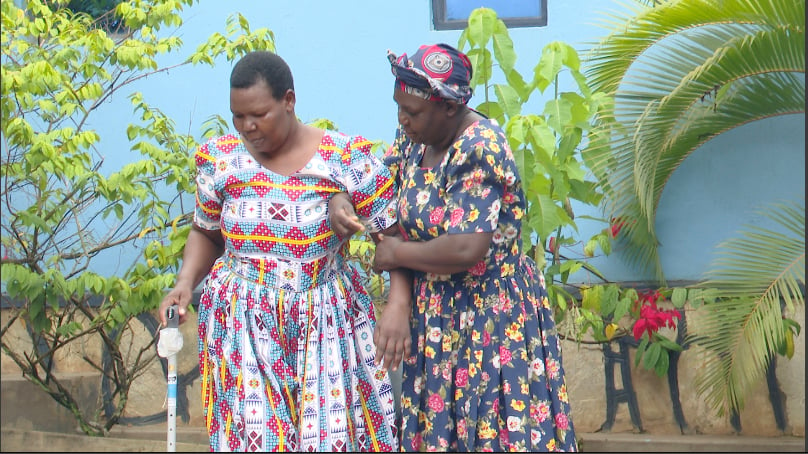Prime
Providing safe drinking water solutions at scale

Students queue up to get safe drinking water from the Impact Water Ultraviolet purification system. PHOTO BY Eronie Kamukama
When non-profit Impact Carbon was first introduced in Uganda, it sought ways of advancing the production and quality of improved, clean-burning cook stoves as a way to mitigate carbon emissions and reduce indoor air pollution.
As operations at Impact Carbon progressed, there was a realisation of the need to simultaneously introduce water purification systems.
“We found that we could also look into introducing water purification systems as a channel to reduce consumption of wood based fuel so instead of having to boil water and use lots of wood which has a negative impact on the environment, households and institutions could use purification systems,” Mark Turgesen, Director of Impact Carbon and Impact Water in Uganda explains.
In 2012, Impact Carbon carried out a pilot study to identify how it could help schools in particular, primarily because it would allow the organisation to deal with a large population that needs safe drinking water and more so because children are part of the most vulnerable people in society.
Large scale problem
Statistics from Water.org, an organisation that provides water solutions on a large scale and operates in 14 countries around the world, indicate that about 8 million Ugandans cannot access clean water. According to Turgesen, children have a right to survival and part of survival is adequate food, adequate water and proper shelter.
“It should be accessible not for children to just meet their basic rights but to also enjoy the health implications which can affect attendance rates at school and attention in class,” he says.
The Water and Sanitation Programme Africa Region (WSP-AF) reported that 440 children die every week in Uganda because of waterborne diseases. Impact Carbon estimates that 40 per cent of diarrheal cases are attributed to water consumption at schools.
However, amidst all this, one thought lingered on the minds of the team at Impact Carbon.
“Do we offer free water purification systems to schools? Is that sustainable? What could we do that would have a profound impact to ensure that when we have introduced these systems, we are able to maintain them,” they wondered.
The solution lay in operating the project as a business. More so, buying the systems would encourage schools to own the responsibility of carefully utilising and maintaining them. The idea birthed Impact Water which was registered in 2015, a social business that provides reliable safe drinking water to Uganda’s institutions.
Response
Mr Turgesen says the response from schools is the same as when Impact Water opened shop in 2015. “The response is, ‘when can I get started’? It is because schools are looking for solutions because they know it is a problem,” he notes.
This was the case for Mr Adam Kakembo, a teacher and sanitary master at Kawempe Muslim Secondary School in Kampala. Kawempe now has three Impact Water systems and consumes about 4500 litres of water a day. Kakembo explains that before the installation of the purification systems, “We would boil 300 litres for the boys and about 200 litres of water for the girls in the students’ kitchens. We would consume about three to four lorries of firewood per week.”
Kakembo notes that besides the cost implications, the water boiled in this way was inadequate, unreliable and laborious to supply. The students “would get water only during lunch time. Sometimes firewood would get wet and we would go three days without boiling water. Also, we would store the water in saucepans which exposed it to contamination,” he says. Today the school’s story is similar to that of Kibuli Secondary School, another beneficiary in Kampala. The deputy head teacher Hajjati Masitula says the system is convenient and provides easy access to safe water.
Anchored by affordability
Kakembo says safe drinking water is now always available, the system is energy efficient and affordable; the costs can be met within the confines of the school’s budget. Cases of typhoid have also been reduced. “Any school can afford it. The barriers between those who have the system and those who do not is the information gap,” Kakembo adds. This is possible because when business commenced, Impact Water sought a new way to make the water system affordable for schools. It put in place a credit facility that allows schools to pay over a two and five year long payment plan, each child paying an average of Shs800 per term.
Since Impact Water’s inception, 650,000 students in 1300 schools have been able to access safe drinking water thanks to its systems. Impact Water is looking to expand further in institutions such as health facilities by specifically targeting bulk sales with non-governmental organisations and via partnerships with school associations. For now, the company hopes to extend safe drinking water to 1 million children daily by the end of 2017, reach 5000 schools in Uganda by the end of 2018 and 10,000 schools globally by the end of 2020.
“Down the road five to ten years from now, I hope that with these meaningful engagements - with school associations for example - that safe drinking water will be expected in the school and that when a parent takes their child to school they know safe drinking water will be available just like food,” Turgesen says.
The process
The water goes through a three stage process. For the first part of purification, Impact Water connects its Ultraviolet purification system to existing water sources such as national water taps, wells, boreholes and rain water harvest. The water is then filtered to remove dirt and large pathogens. To make it taste fresh, activated carbon purification removes dissolved substances and improves the odor. The water is then treated in the ultraviolet chamber to kill all bacteria and viruses that pass through the filters. The filtered water is finally kept in stainless steel tanks designed for schools.




